How to grow catmint – expert advice for this fragrant perennial
Catmint is a great option for gardeners seeking low-maintenance perennial plants
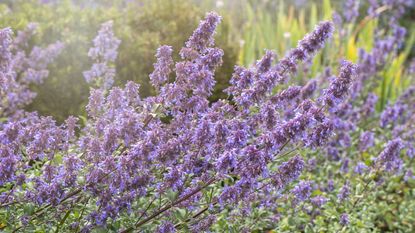

If you are looking for English cottage garden plants, I do not think there is anything better than the scent and sight of catmint tumbling over walls or edging the garden path. With silver-green foliage, attractive perfume, and trumpet-like lilac blooms, catmint is a real performer, earning its place at the front of the garden border.
This aromatic flowering perennial is a favorite of mine, having grown catmint in several gardens where I have worked as a professional gardener. Catmint, or Nepeta, is one of those long-flowering plants that can add color and interest for much of the spring and summer, and with the right care, catmint will not fail to impress both gardeners and cats alike.
Considered one of the best perennials, learning how to grow catmint is relatively straightforward, but there are a few things to know about soil, lighting requirements, and pruning that will ensure that your plants thrive. Here, garden experts share top tips to guarantee catmint success.
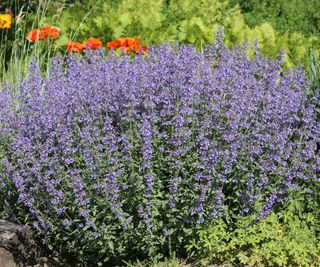
How to grow catmint
With scented foliage and flowers, catmint is a reliable plant for the backyard. This low-growing plant will form attractive and colorful clumps in the backyard, returning year after year. The common name, catmint, is a result of this plant attracting cats, so be warned, you might soon be attracting members of the local feline community to your yard.
What to know about catmint
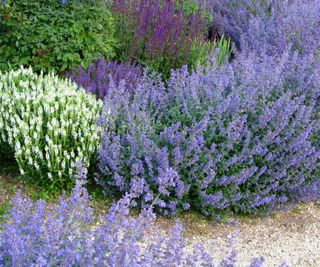
Catmint is a hardy and versatile flowering plant. 'Growing well in US hardiness zone 3 to US hardiness zone 8, catmint grows best in a sunny spot in the yard,' says Gail Pabst, gardening expert and Marketing Director for the National Garden Bureau.
Native to parts of Europe, Africa and Asia, Nepeta is a popular perennial, with different varieties grown in garden borders and containers across the world. One of the most popular and most used varieties is Nepeta racemosa 'Walker's Low', available as starter plants from Walmart. I have planted and grown this variety myself, and with the right care it flowers right through until fall.
'With the right maintenance, catmint will produce abundant summer flowers,' Gail adds. 'The trick is to know when to prune catmint at just the right time to encourage new growth.' Pruning in late winter or spring is generally recommended, but deadheading and trimming flower stems during the growing season can also help to encourage continued growth.

Gail is a passionate horticulturist with over 25 years' experience in the industry. She is an avid home gardener too and loves to try out the newest varieties and techniques. Gail is the Marketing Director for the National Garden Bureau and her work has helped her to continue their mission of inspiring, teaching and growing in gardening with others.
How to grow catmint
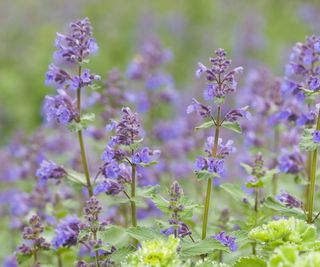
- Soil: Catmint, or Nepeta, must have free-draining soil. I have grown these Mediterranean plants in two different gardens when working as a gardener in Italy, and these plants tend to thrive in well-draining, loose, almost rocky soils. I would avoid planting catmint in heavy, clay-based soils, or any borders prone to waterlogging during the winter or spring.
- Light: 'Catmint plants need sunshine, and lots of it,' says Mike Murphy, garden expert and owner at You Had Me At Gardening. While these perennials can tolerate partial shade, 'yards in full sun will see the best results.'
- Watering: If you are looking to conserve water, catmint is a good perennial to plant. Considered drought-tolerant planting, catmint can grow fine with relatively little water during the spring and summer, as is common for plants with silver foliage. As with any newly planted perennials, I recommend watering at least once per week during spring and summer for the first year, just while they establish their root system.
- Fertilizing: Catmint is one of those plants that thrives on neglect. I would not advise fertilizing catmint, and this perennial grows just fine in nutrient-poor soils. One of the most common fertilizing mistakes is feeding plants when they do not need it, and with catmint, it is sensible to put the fertilizer back in the garden shed. For a boost, I would suggest annually mulching your borders in the fall or winter, which can help to improve the quality of your beds and provide everything that your perennials need. Mulch is available to buy online from Walmart.
- Pruning: 'March is the best time to prune catmint,' Mike continues. 'The trick is to prune your catmint plants just as new growth is beginning to emerge in spring.' Mike also recommends trimming your plants during the growing season, typically around May or June, to 'encourage vigorous growth and a second flowering later in the season.'

Mike grew up gardening with his parents and grandparents. He enjoys his backyard orchard of dwarf fruit trees, raspberry and blackberry patches, and raised garden boxes. In addition to his perennials, Mike enjoys sprouting new fruit and vegetable seeds every spring.
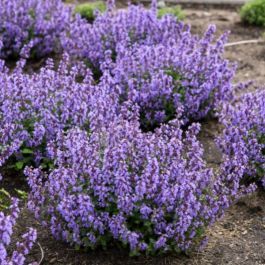
This catmint is prized for producing a mass of purple blooms for much of the spring and summer. What's more, pollinators will love it.
FAQs
Can you grow catmint in pots?
Yes, catmint can be grown in pots, which is a good idea for those gardeners with smaller yards. While catmint is a drought-tolerant perennial, plants grown in pots will require more water than if they were grown in the ground, so monitoring watering requirements is important during the summer months.
Catmint is a low-maintenance perennial that is sure to add color and fragrance to any yard. For more information about using fragrant perennials, see our guide on how to design a fragrant garden, and fill your outside space with perfume this year.
Sign up to the Homes & Gardens newsletter
Design expertise in your inbox – from inspiring decorating ideas and beautiful celebrity homes to practical gardening advice and shopping round-ups.

Thomas is a Content Editor within the Gardens Team at Homes and Gardens. He has worked as a professional gardener in gardens across the UK and Italy, specializing in productive gardening, growing food and flowers. Trained in Horticulture at the Garden Museum, London, he has written on gardening and garden history for various publications in the UK, including The English Garden, Gardens Illustrated, Hortus, The London Gardener and Bloom. He has co-authored a Lonely Planet travel book, The Tree Atlas, due out in 2024.
-
 Adele's minimalist garden looks just as good during every month of the year – landscape designers say the look is enduring
Adele's minimalist garden looks just as good during every month of the year – landscape designers say the look is enduring'The garden will usually be on display from the kitchen throughout the year, and it has to look perfect': The singer's yard is the perfect starting point
By Megan Slack Published
-
 Colors to avoid pairing with beige – 5 shades you’ll want to stay clear of
Colors to avoid pairing with beige – 5 shades you’ll want to stay clear ofBeige might be the new gray but what color combos are a no-go with this classic shade?
By Becca Cullum-Green Published
-
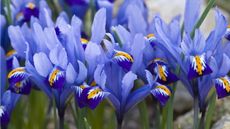 Best non-bearded iris varieties – 5 elegant blooms for your flower garden
Best non-bearded iris varieties – 5 elegant blooms for your flower gardenNon-bearded irises are a good choice for a wet and shady yard
By Tenielle Jordison Published
-
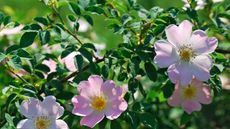 Transform your borders with romantic wild roses – and add natural charm to any garden
Transform your borders with romantic wild roses – and add natural charm to any gardenLearn how to grow dog roses for a relaxed look that will prove popular with pollinators
By Thomas Rutter Published
-
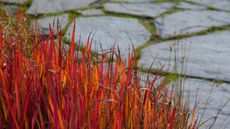 How to grow Japanese blood grass – the vigorous ornamental plant with unmatched crimson-red foliage
How to grow Japanese blood grass – the vigorous ornamental plant with unmatched crimson-red foliageThis colorful perennial grass will be a striking addition to any plot, but, be warned, this plant can take over
By Thomas Rutter Published
-
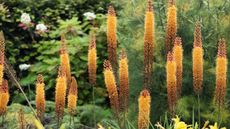 Best tall perennial flowers – 11 graceful plants for natural screening and privacy
Best tall perennial flowers – 11 graceful plants for natural screening and privacyPlant these lofty perennials for height, structure and natural screening
By Jill Morgan Published
-
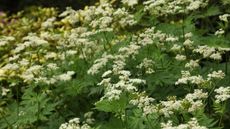 Forest garden ideas – how to grow edible planting in layers to make the most of your space
Forest garden ideas – how to grow edible planting in layers to make the most of your spaceForest gardens grow edibles in layers, and are a clever way to add more fruit, vegetables and herbs into your space, as well as increase biodiversity
By Sarah Wilson Published
-
 7 flowers to plant in September and tips for where and how to sow them successfully
7 flowers to plant in September and tips for where and how to sow them successfullySowing flower seeds in September is simple and will mean sturdy plants with earlier blooms next year
By Drew Swainston Published
-
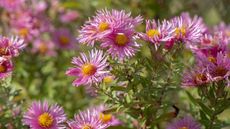 Best aster varieties – 10 beautiful options with colorful and striking blooms
Best aster varieties – 10 beautiful options with colorful and striking bloomsThe best aster varieties can be relied on to fill borders and pots with long-lasting color
By Graham Rice Published
-
 Standing mowers vs riding mowers – a mowing expert reveals which is best
Standing mowers vs riding mowers – a mowing expert reveals which is bestStanding mowers vs riding mowers is a heated debate among landscapers. I spoke to a landscaping expert to find out if standing mowers really are the best
By Alex David Published